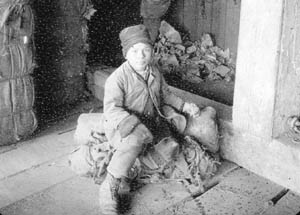

The placing out movement has been glamorized and sentimentalized by a large segment of American society as a humanitarian effort for the benefit of orphaned urban children. The Children's Aid Society of New York City "placed out" over 150,000 children and young adults between the years 1854 and 1929. Many of these children were sent to live with rural families in the Midwest. Today, towns that were formerly "orphan train" destinations celebrate the romanticized history of the placing out movement in their communities. Local "orphans" and their families are treated like celebrities, and the founder of the program, Charles Loring Brace, is regarded with reverence. Modern supporters of the placing out program ague that many orphaned and abandoned children were able to start new lives in caring and loving homes thanks to the work of the Children's Aid Society. They regard the program as a shining example of the generosity and unselfish nature of rural families living in the heartland of America and applaud the tireless efforts of missionaries and social workers in New York City in rescuing these children from the cruelty of life on the streets.
Modern critics of the program, however, argue that the placing out movement was a black mark on American history. These critics argue that the policies and practices of the Children's Aid Society and its administrator, Charles Loring Brace, were more harmful to the children the program placed out than the life on the streets they were presumably rescued from. They claim that the placing out movement was nothing more than an attempt by the middle and upper classes of New York City to rid themselves of the problems created by the large numbers of poor in living in or near their communities and that Brace's primary motivation was to remove dangerous urban youth from the streets of New York City. They claim that Brace was deceitful in describing the program as a humanitarian effort to find homes for orphans, when in reality, the program was an employment service through which western farmers could gain access to cheap labor. They compare the poor working conditions of older boys working on Midwestern and southern farms to those of slavery. These critics chastise Brace for sending trainloads of children into remote areas of the country with no regard for their emotional well being or physical safety.
The policies and practices of the CAS did more harm than good in many instances. Farmers did use the CAS as a labor source. Many children were placed in abusive situations. The overriding concern of the CAS was to remove large numbers of children from the city. Many of the children who participated in the program were not orphans, but had living family members.
However, it is unfair to criticize the placing out program by the standards of today. The values held by the majority of people living in nineteenth century society were very different from the values held by Americans living in the twenty first century. In order to understand the philosophy behind the placing out movement, it is necessary to understand the values of nineteenth century society. Based on the principles of the day, Brace created a movement to deal with the problem of reforming the children of the poor in a manner which was acceptable to the majority of society at the time. While some of the policies of the Children's Aid Society were questioned by critics from the very beginning of the program , newspapers of the time credited the CAS with "diminishing the misery of all New Yorkers." In general, the placing out movement was supported by the majority of nineteenth century society. The Children's Aid Society would not have been able to place out over 150,000 children over the course of seventy five years without the support of the community as well as the support of state and local governments, whose allocation of grant money in 1871 allowed the CAS to continue its work well into the twentieth century.